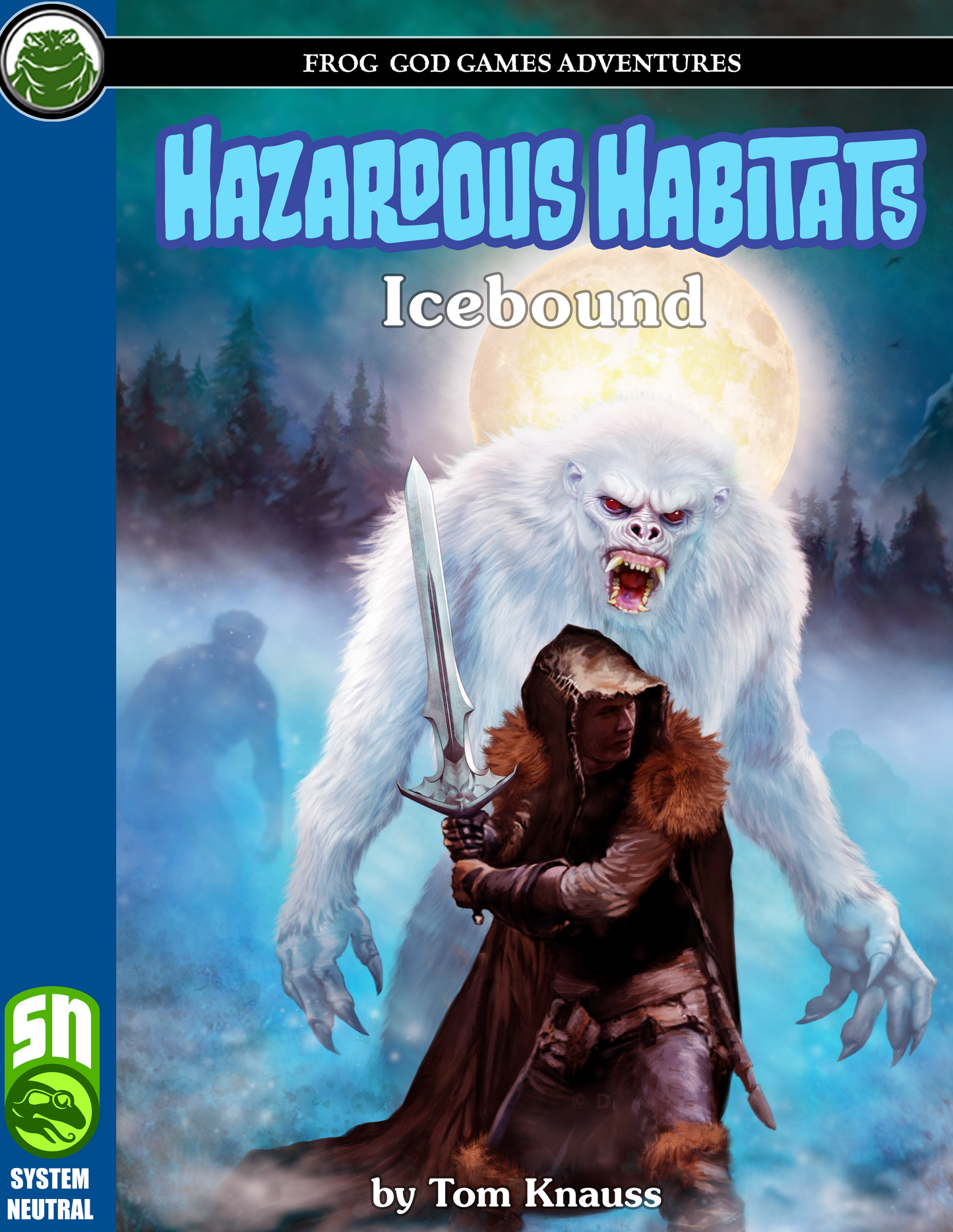froggodtrial
Hazardous Habitats: Icebound
Hazardous Habitats: Icebound
Couldn't load pickup availability
What is the Hazardous Habitat Series?
Hazardous Habitats is a series of system-neutral supplements for any roleplaying game that offers a deep exploration of a specific environment. Temperature, terrain, adventure seeds, natural hazards, methods of travel and survival, and weather patterns are all detailed in an instantly insertable way for use at your table
The yellow dwarf star at the heart of our solar system continuously radiates light and warmth into the dark, empty expanse of outer space. Our world, the third planet from the glowing orb we refer to as the Sun, orbits approximately ninety-three million miles away from the roiling sphere of searing hot plasma that makes life on Earth possible. Given the vast distance the cosmic rays must travel to reach our planet in the first place, it would stand to reason that adding a few hundred or even thousands of extra miles to their journey would have a negligible effect on the beams’ strength or intensity. For instance, our celestial neighbors, Venus and Mars, which are respectively tens of millions of miles closer to or farther away from the Sun than the Earth, are only several hundred rather than thousands of degrees warmer and colder than our home. If the preceding logic were true, the whole Earth would have a uniform surface temperature, regardless of whether you were at the equator or atop one of the poles. However, climate data proves the poles and the regions around them experience significantly cooler temperatures than the locales basking in the sun at or close to the equator, even though the mere 5,400 nautical miles from the equator to either of the two poles represent an infinitesimally small fraction of the distance separating Earth from Venus and Mars. These observations naturally beg the question as to why the poles are so much colder than the tropics when we take into account how close the two locations are in the solar system’s grand scheme. Several important factors provide the complex answer.
This GM Aid book provides information on the following:
~Icebound
~Polar Bioms
~Polar Travel
~Modes of Travel
~Polar Hazards
~Weather


